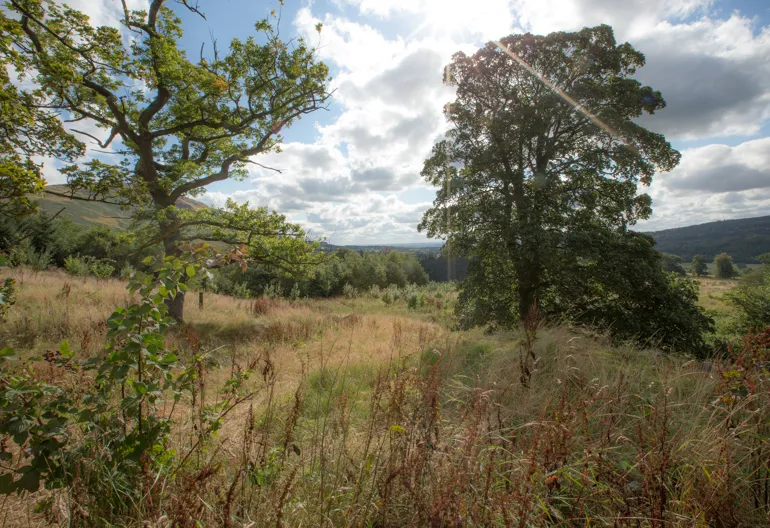This meandering walk will take in sections of Mugdock Country Park, Milngavie Reservoir and the West Highland Way. There will be options to shorten the walk.
Situated 10 miles north of Glasgow and designated in 1987, the 270 hectare Mugdock Country Park comprises woodland, moorland and heathland. A good proportion of the park is designated as a Site of Special Scientific Interest (SSSI).
There are many interesting parts to the park including Mugdock Loch, Craigend Castle, Mugdock Castle (a Scheduled Ancient Monument), and an anti-aircraft gun site (from WWII) at Khyber Field.
The Courtyard, adjacent to the parking area, houses the Visitor Centre, shop, toilets, and café.
Starting Point for the Walk:
Mugdock Country Park Visitor Centre – OS Reference NS 546 779.
Getting there: 10 miles/25 minutes
Take your favourite route to Milngavie and then take the A81 (Strathblane Road). Continue along until you see the sign for Mugdock Country Park (NB the sign is some distance from the left turn). Turn left onto Craigallian Road and keep following the signs. At the T junction, turn right and continue until the car park on your left. The best place to park is the overflow car park (sign posted) as it is far less busy.
Please note: If using SatNav make sure to enter Mugdock Park Visitor Centre, as Mugdock Park will take you to one of the outlying car parks, miles from where you want to be!
Toilets are available at Mugdock Country Park Visitor Centre.
The Walk: Mugdock Country Park – 8.25 miles (13 km) (Shorter options available)
Leave the Visitor Centre and head down the track leading to the remains of the house for the old zoo. Just past the ruins, turn left and walk straight along, skirting the edge of Mugdock Loch and then turn right, signposted Mugdock Castle. At the T-junction at the end of the loch, turn left. (Option A – For a very short walk turn right at this point, explore the castle, and follow the signs for the Visitor Centre).
Continue on towards the South Car park and, just past the path for the car park, look carefully for a path on the left which runs parallel to the road and eventually emerges onto the road. After a short distance on the road turn left into Milngavie Waterworks. There is a lovely, wooded path along the edge of the reservoir which is reached by following a path over the measuring pond on the left. Continue round this reservoir until a crossing point between Milngavie Reservoir and Craigmaddie Reservoir. After crossing the reservoirs, turn right past various buildings and instead of continuing round the reservoir, take the access road down towards Mugdock Road. (Option B – For a 4-mile walk continue round the reservoir (passing Drumclog Moor Car Park) and retrace the outward route back to the Visitor centre).
Turn left onto Mugdock Road then take the second road on the right, Craigallian Avenue, to re-enter the country park. Continue along Craigallian Avenue towards Craigallian Bridge, the path becomes the West Highland Way (WHW) near Allander Park. (Option C – For a 6-mile walk turn right, off the WHW, and follow the signs for the Visitor Centre).
Continue on the WHW past Craigallian Loch as far as Carbeth. Just past the first few cabins and Carbeth Loch on the left, turn sharp right (before reaching the B821) through a gate and onto an upward path – now the John Muir Way.
Continue on this path as it ascends slowly then evens out, and eventually comes to a T junction. Turn right and continue on until a small parking area on the edge of a road. Cross the road and, veering slightly to the right, follow the path into the country park, crossing a foot bridge, and eventually turning left to head to the Visitor Centre and Car Park.







